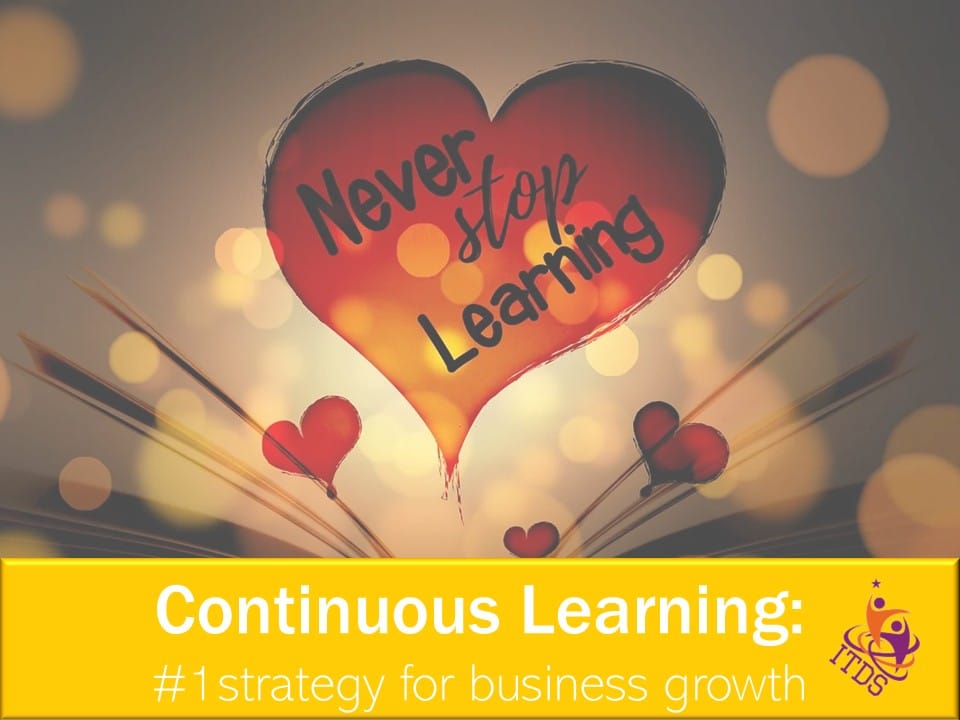How to Write a Mission Statement in 5 Easy, Proven Steps
- Home
- How to Write a Mission Statement in 5 Easy, Proven Steps

“How to write a mission statement…?”
Do you find yourself pondering this question, especially right after you read another one that makes you go: “Wha dis really bout?”
I know I still do, even though I have one for my business and I have helped clients to develop many more.
But even as you’re not clear about how to write a mission statement, you have a sense that they are important, don’t you? Otherwise, why would so many businesses choose to have them?
So, you decide that your small business should have one too. But this immediately creates 2 challenges for you.
Being the person that you are, first you need to be clear on if this mission statement could be one of your business solutions. And second, you want to know quite simply “how do you write one?”
Guess what? I can and will help you with both these issues, but let’s start by diving a little deeper into the whole concept of mission statements.
Definition of a mission statement
How do you define “mission statement”?
Yeah…what is your definition of a mission statement?
Well, if you answered that it’s a statement which captures the core purpose of your business in a short, clear and simple manner, regardless of the size of that business, you are right!
In other words, it announces to the world why your business exists and how you’re serving your chosen market or niche.
And for those of you who like to ask, what do I mean by “short” I mean 25 words or less. After all, you want people to remember it, don’t you?
Here are some examples of mission statements to convince you:
Google: To organize the world’s information and make it universally accessible and useful (12 words)
Nike: To bring inspiration and innovation to every athlete in the world (11 words)
Your mission will largely remain fixed over the life of your business (we’ll discuss why in a minute) but you can rewrite your mission statement as necessary.
Although, you shouldn’t do a rewrite too often, because it might appear as though you don’t know what you do, and what you’re doing. On the other hand, you want your mission statement to constantly reflect what your business does, as accurately as possible.
What is your company’s mission?
To remind you, it’s the reason why you’re in business…your raison-d’etre for starting the business in the first place. Everything you do speaks to your mission.
The single most important thing about a mission is that it’s like a moving target. You’re constantly working at it but you never really fulfill your mission. Think about it…if ever you achieve your mission, there is no longer any need for the business.
For example, let’s imagine that you set up a company to uproot all the plum trees in a 3-mile radius from your house. Once you’ve achieved that goal, unless you pivot fast, it’s the end of your business.
That’s why you need to be very sure about your mission, if you’re going to write a sensible statement to describe it.
How does an effective mission statement help you?
Once you have written an effective mission statement, you can now use it for several purposes, including:
1. As a reminder of your existing purpose and a perspective from which you can look to the future. This is really effective for business planning.
2. Helping you to accurately determine your business model (if you have not already done so) and your core business strategies.
3. As a benchmark for evaluating opportunities to decide if they fit your core business model. Without it, you might find yourself saying “yes” to everything that passes as an opportunity.
4. When combined with your vision and values, it serves as a launching pad for success.
5. As a marketing tool to promote what you do and help you stand out in your niche.
6. The basis for meaningful team building and worthwhile employee engagement, if you have a staff.
The answer to “How to write a mission statement”?
I can hear you exhaling…finally we’re here! Yes! So let’s write your statement…
First, I’ll give you the 5 steps all at once and then I’ll walk you through them.
On my Scout’s Honor (scouts were more fun than the Girl’s Guides) I promise you that if you follow these steps you will come up with a fairly decent mission statement. One that you can use in many effective and exciting ways.
Oh! And one last thing. The following steps will help you if you’re writing it for the first time or if you’re rewriting it as part of a strategic planning activity.
Now for the steps…
- Assemble your tools
- Get clear on your mission
- Draft/Rewrite your mission statements
- Test the validity of your draft statements
- Pick the winning statement and own it
Now the walk through…
1. Assemble your “mission statement” tools
If you set out to develop your mission without having a plan or knowing what will help you to achieve your goal quickly and efficiently, it’s likely to be a hit or miss exercise. Usually more miss than hit.
So you need to assemble a set of tools which will help you to brainstorm effectively and easily. A good set includes:
A clear business model
Your business model is simply how you plan to make money with your business idea. In other words – where the money is coming from to sustain your mission or purpose.
A committed core team
This is better than working alone. If you’ve been in business for a while, this should be a combination of key employees (could be all if your business is very small) selected advisors, mentors and a few other important persons whom you trust.
If you’re now starting out, you can use your advisors, mentors and other persons in your network, whose advice you value.
Whatever you do, keep the team small (no more than 8 persons) and make sure YOU lead this team.
Open minds
Whoever you choose for your team, you need them to have open minds. They will not help you if they’re judgmental and close-minded. On the other hand, you will move forward faster if they’re willingly prepared to give advice that’s free from bias and in the best interest of your business.
Critical thinking
Critical thinking, as you are aware, is the ability to think clearly and rationally. When you deliberately select it as a tool for this exercise, you are knowingly bringing balance to the often “out there” ideas, sure to be thrown up by the open minds.
Time
Yes…you do need time…and patience too.
2. Get clear on your mission
Remember that earlier in this post, we said that your mission is why you are in business, your purpose, the raison d’être for your business?
Well, it follows that you would want to be crystal clear about your mission, so that your mission statement truly reflects what you do.
To get that level of clarity, here are some questions you can brainstorm with your team:
1. Why are you in business? (What do you want for yourself, your family and your customers?)
2. Who are your customers? (Where are they? What do they need? How do they make their buying decisions?)
3. What image of your business do you want to convey?
4. What is the nature of your products and services? (How do these relate to your purpose? What factors determine pricing and quality? What is your business model?)
5. What level of service do you provide? (Be specific – define what makes your service extraordinary)
6. If you have any, what roles do you and your employees play?
Now that you know what your mission is, you are ready to…
3. Draft/Rewrite your mission statement(s)
Whew! Can you imagine it? All the wonderful information which came out of the previous exercise now has to be reduced to a single statement that rocks the world! Right?
Right. But wrong too.
Right…they have to be reduced to a single statement and ideally, no longer than 25 words, remember?
But wrong…your mission statement does not have to rock the world. Some of the most powerful ones are simple and direct.
You don’t believe me? Here are 3 of my favourites:
Sweetgreen: To inspire healthier communities by connecting people to real food.
Honest Tea: To create and promote great-tasting, healthy, organic beverages.
TED: Spread ideas.
Now to get to your single, succinct statement, have the team come up with about 3 – 5 possible mission statements. They should meet the criteria we discussed previously.
Please note, if you already have a mission statement when you’re doing this exercise, include it among the final selections.
So now you have a possible 5 statements, YOU, not your team, have to select the final one. How will you achieve this?
Well, you can put the 5 of them in your pink church hat, close your eyes and pull one.
But a better way is to…
4. Test the validity of your draft mission statement
So now that you know how to write a mission statement, your next step is to test the validity of the draft statements from the team.
How do you do this?
You take each statement one by one and subject it to five rounds of “why is this important?”
Why is this important? ☺
Do you recall that you had to answer some specific questions to help you become clear on your mission?
Well, those questions helped you to focus on the small “pieces” of your business.
But the “why is this important?” exercise forces you to focus on the bigger picture, the larger reason why you are in business.
By the time you have taken your statement through this exercise, you will KNOW if it accurately represents the mission of your business.
Why?
Because, each round strips away the “leaves” away and brings you closer to the “trunk” or core of your purpose.
Let’s see how it works by working through an example together:
We can use the mission of my business ITDS, which is to:
Help small business owners grow and scale their businesses by acquiring/honing key interpersonal and business skills (17 words)
Why is this important?
Developing yourself as a means of developing your business, guarantees that the business is led by a mature business person, capable of effectively scaling and growing the business.
Why is this important?
Quite simply, it helps you remain in business longer.
Why is this important?
Small businesses represent the fastest means of business growth in many developing and even mature economies. High numbers of small business failures slow economic growth and really kills the entrepreneurial spirit.
Why is this important?
Keeping the entrepreneurial spirit alive increases the viability of small businesses. This in turn allows them to contribute to economic and social growth as well as serve as a magnet to attract more people to start businesses.
Why is this important?
All of the above create the need and the urgency for small business owners to develop and hone their key interpersonal and business skills, as a means to growing and scaling their businesses.
Notice that this exercise is like a closed loop system and the last “why is it important” really nails the need for your business, which is then reflected in your mission statement.
5. Pick the winning mission statement and own it!
As you rinse and repeat the exercise with the other statements, you will notice some will not make it through the five rounds. Don’t worry, those are your separators, and they will help bring the “best” statement to the top.
It is at this point YOU will choose the statement that you feel best represent your business. It’s all about your capacity to make good decisions.
However, once you have chosen, you should own it. By “own it”, I mean that you cannot come back afterwards and claim that “I never really liked it” or “it didn’t really resonate with me!”
You see, that’s really not necessary because if you’re not happy with any of the statements…you decide what happens next…
Your next mission statement, should you accept…
So, you asked me how to write a mission statement and I showed you how.
I gave you the same 5 steps I use to write my own mission statements and those of my clients.
What’s more, I gave you examples and even walked you through a worked example of the 5 rounds of “why is this important?”
Now it’s your turn…
All you have to do, is take all this information and either write a mission statement for your new business, or review your existing one to make sure it still represents your mission.
Come on…that’s not too hard now…is it?
Video of The Week:
Are you still wondering about starting a new business in 2024? You’re not too late!
In this week’s video, in just about 3.5 minutes, The Young Entrepreneur Forum shares the top 10 trending business ideas in 2024. I could start a business with idea #5…
Watch the video and then check out some great advice on raising money if you want to do so to start that business! Enjoy!
Meet Lorna Barrow

When it comes to helping you grow your small business, develop yourself & your team, Lorna’s got your back!
Follow her on twitter @LornaBarrrow
Join her Facebook Page: Impact Training
Email her at: Lorna@impacttrainingservices.com




